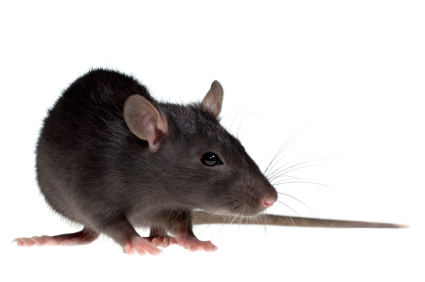
How Do Roof Rats Get in the House?
Roof rats climb trees with ease and can scamper up siding onto roofs in a matter of minutes. From there, the pests have their pick of ways to get indoors, including chimneys, attic vents, and gaps in roofing. Holes no larger than a quarter can be big enough to let a roof rat in the house.
Where Do Roof Rats Live Indoors?
Tight, elevated spaces like attics, wall voids, false ceilings, and tall cabinets are favorite nesting spots for roof rats in the house. People may even spot these agile pests traveling along roof beams or dropping down into kitchens and living areas in search of food.
Dangers & Damage
Roof rats in houses frustrate residents in many ways, including:
- Leaving greasy rub marks on walls and surfaces
- Creating foul smells with their filthy nests and scattered droppings
- Making loud scratching and squeaking sounds in walls at night
In addition, roof rats in the home can pose more serious health and safety issues:
- Disease – Roof rat droppings and urine often carry bacteria harmful to humans. Coming in contact with these germs may cause salmonellosis or other ailments. Fleas and ticks in the pests’ fur spread plague and murine typhus as well.
- Damage – Like all rodents, these pests have the constant urge to gnaw. Roof rats in houses are often responsible for teeth marks and splintered edges on wood trim, furniture, and support beams.
- Danger – The pests’ gnawing behavior can also present some dangers to residents. Roof rats love to chew wires in walls and electronics, which can cause power shorts or even house fires.
Get Rid of Roof Rats
Because of the risks posed by their presence, roof rats in homes are unsafe. Putting off removal not only creates a greater chance of disease and damage, but it also gives these quick-breeding rodents time to spread throughout the house. Call Critter Control at the first sign of roof rat trouble.
Get them out.
Keep them out.®
Experiencing a wildlife or pest issue? We can help! Complete this form and your local Critter Control® office will contact you to assist.
Quicklinks


